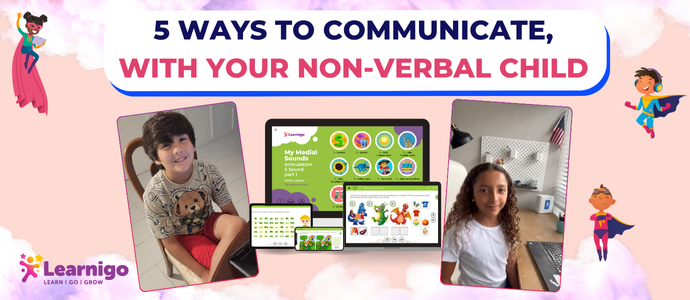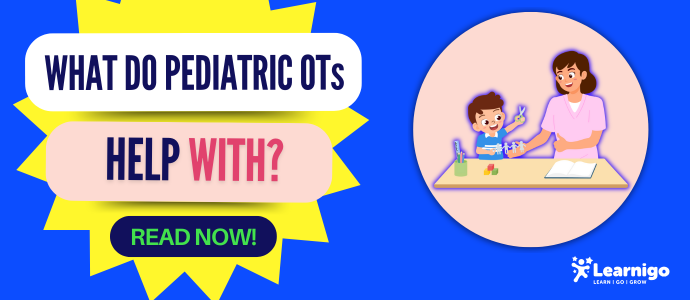5 Ways to Communicate with Your Non-Verbal Child
June 5, 2025
Thomas Talbot
March 19, 2024
0

Welcome back Learnigo Learners 👋
Dyscalculia Is a lesser-known learning difficulty and affects 3-6% of the student population, often coexisting with dyslexia (Attwood, 2002). 10% of children with dyscalculia face challenges in math due to memory-related issues (Attwood, 2002). Let’s take a closer look at the Learnigo Dyscalculia Program.
Derived from Greek and Latin roots, “dyscalculia” translates to “difficulty in counting” or “disorder in calculation skills.” Ladislav Košč’s research highlights dyscalculia as a structural disorder of mathematical abilities, originating from genetic or congenital brain anomalies (Košč, 1974). The ICD-10 and DSM-5 classifications distinguish dyscalculia as a specific developmental disorder, focusing on arithmetical skills without attributing difficulties to cognitive or sensory impairments.
Recent discoveries in research reveal the complexities of dyscalculia, emphasizing its distinct nature from dyslexia and the need for targeted support.
Dr. Ladislav Košč identifies six types of dyscalculia, each impacting different aspects of mathematical understanding (Khing, 2014):
These classifications provide insights into the diverse challenges students with dyscalculia may face, from verbal expression difficulties to operational struggles. The Learnigo Dyscalculia program was created with these types in mind, with targeted practice to support each aspect of mathematical thinking.
Identifying dyscalculia involves assessing six key areas of student performance (Kucian & von Aster, 2015):
Understanding these signs helps educators and parents in recognizing dyscalculia-related challenges.
As educators, the challenge lies not just in teaching, but in fostering an environment where every student can thrive. For those students requiring extra support in critical thinking and mathematical skills, Learnigo presents a groundbreaking solution with our Math – Dyscalculia program. Tailored for children aged 6 and above, this program can be used in a variety of settings to target numerous math skills.
Engaging Learning Activities: The program brings learning to life with over 600 interactive screens, including puzzles, board games, dominoes, coloring, spot-the-difference, matching, drag-and-drop, memory games, and rhymes.

Flexible Access: Online access allows educators to use the program anywhere, anytime – be it in school, at home, in therapy offices, or on the go. Learnigo resources work on smartphones, tablets, computers, and interactive whiteboards. No download required.
Numerous Practice Opportunities: Multiple chances for students to practice, with additional printable worksheets for extended learning.

Customizable Learning: Tailor the practice to individual needs, with options for hints, reduced distractions, and progress tracking.
Clear Instructions and Progress Monitoring: Easy-to-understand written and audio descriptions guide students through activities. Progress data ensures educators can monitor and celebrate success.

Systematic Progression: The program adopts a “small steps” approach, systematically progressing from specific to abstract concepts.
Real-life Mathematics: Familiar materials resonate with children, making the learning experience relatable and engaging.

Logical Thinking Tasks: Specially designed tasks stimulate logical thinking, laying a strong foundation for mathematical understanding.

Multi-faceted Approach: From spatial thinking to coding elements, the program incorporates various therapeutic exercises for comprehensive skill development.
Learnigo EDU’s Math – Dyscalculia program is an outstanding tool, offering educators a powerful resource to support students. It can be used to introduce, practice, progress monitor, and test mathematical concepts. With its meticulously designed exercises and commitment to individualized learning, this program stands out, unlocking a world where every child can excel.
Try out our Dyscalculia program using our free demo version.
We’d love to know what you like about the Dyscalculia program or ways to improve! Let us know at feedback@learnigo.com.
Stay in touch by signing up for our email list to receive the latest updates such as new programs, freebies, and promotions.
References
Attwood, Tony. “Dyscalculia and Dyslexia: Two Different Issues, or Part of the Same Problem?” The Dyscalculia Information Centre. First and Best in Education Ltd., 2002. Accessed September 29th, 2023, https://www.dyscalculia.me.uk/Dyscalculia%20and%20Dyslexia.pdf.
Khing, Bweyhunle. Learning Disabilities, Identification, Remedies & Teaching Strategies. Kohima, Nagaland: Gwanyu Publishers, City Printing Press, 2014. Original work published 1974 by Košč, L., Six Types of Dyscalculia.
Kucian, Karin and Michael von Aster. “Developmental Dyscalculia.” European Journal of Pediatrics 174 (2015): 1-13. doi: 10.1007/s00431-014-2455-7.
Košč, Ladislav. “Development of Dyscalculia.” Journal of Learning Disabilities 7, no. 3 (1974): 164-177.

June 5, 2025

May 8, 2025